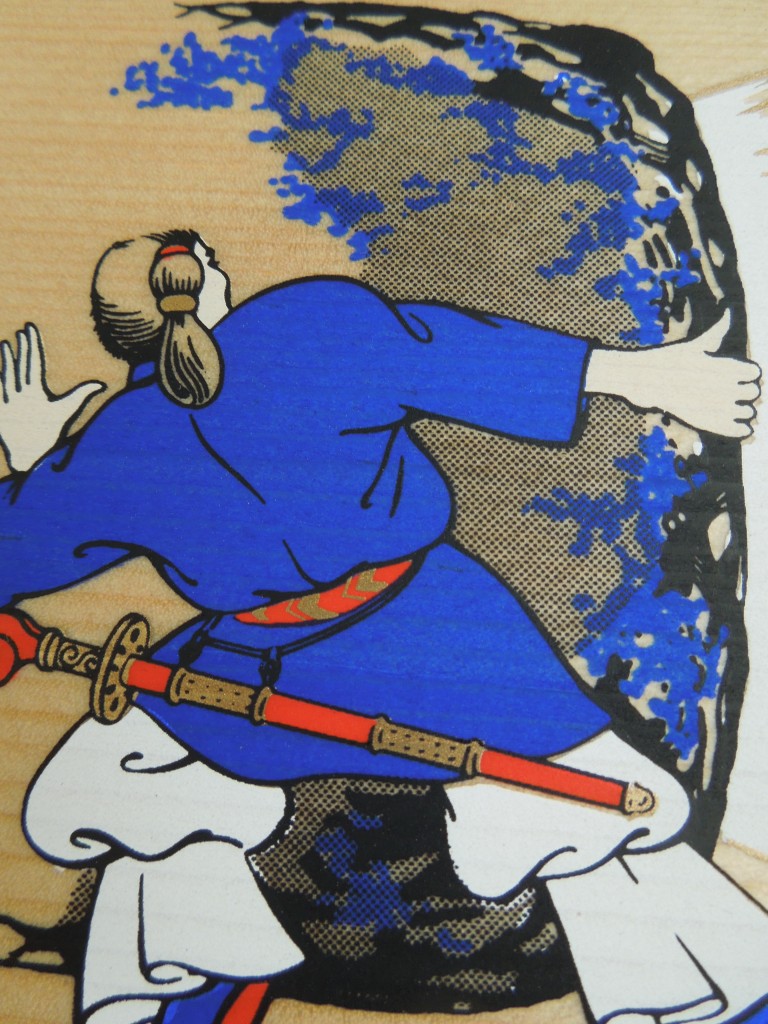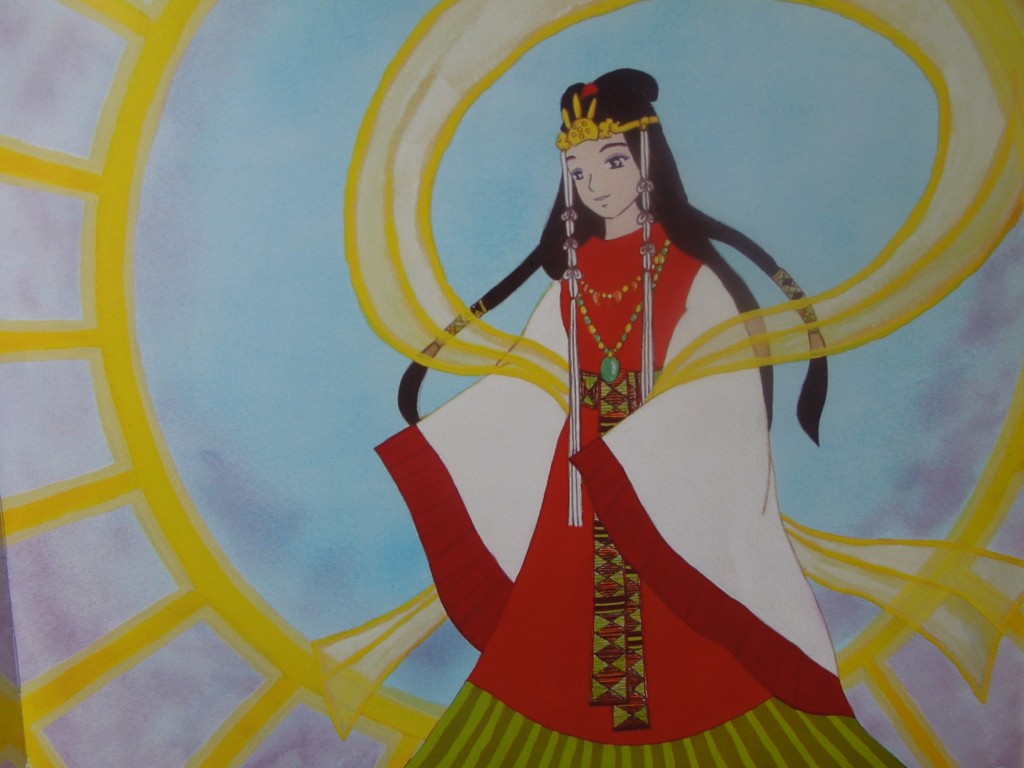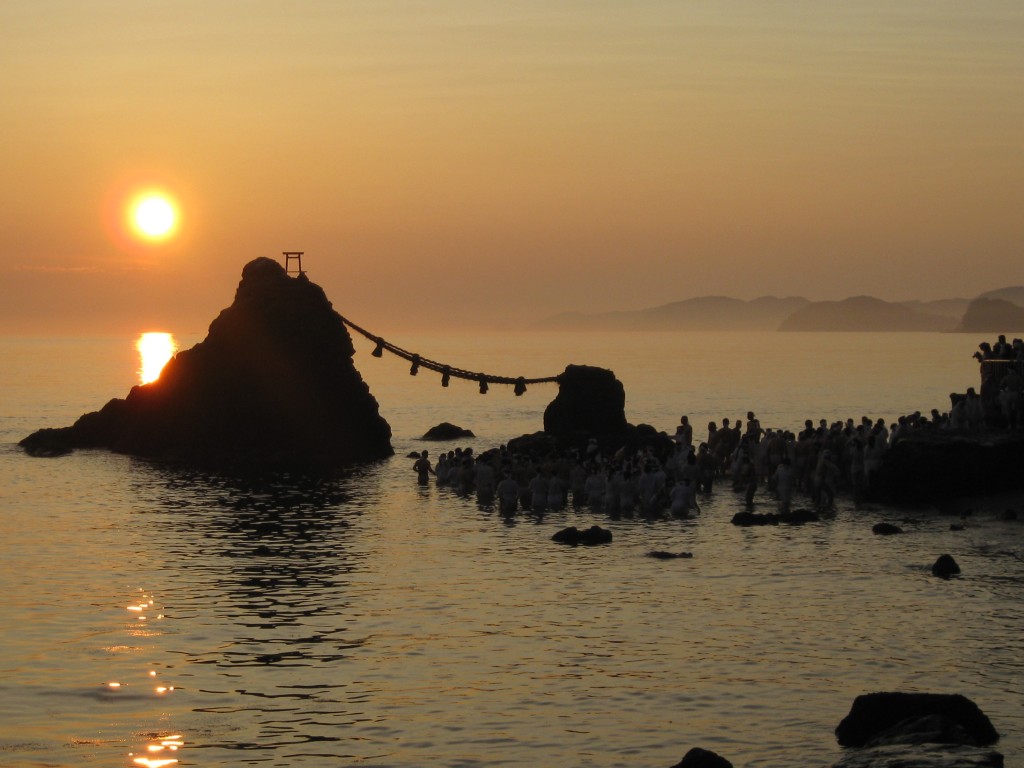One of the points of this blog is to show that Shinto, far from being unique in any way, shares much in common with religions throughout East Asia and beyond. In this respect it was of interest that we read Michael Witzel’s article in the Electronic Journal of Vedic Studies. It’s entitled “Vala and Iwato: The Myth of the Hidden Sun in India, Japan and beyond”.
Green Shinto readers will know that Iwato refers to the famous Rock Door in the Kojiki myth in which the sun-goddess Amaterasu (Heavenly Shining One) retreats inside a cave after being insulted by her brother, the storm-god Susanoo. Similarly Vala refers to the cave in the Indian myth which Indra opens to release the first dawn. It appears in Rigveda c.1500 BC, and thus some 2000 years before the Japanese equivalent.

Tajikara pulls aside the Rock Door of Amaterasu's cave
Details of the myth are obviously culture-influenced (the cow plays a significant part in the Indian myth), but the underlying structure is similar. “Both share a large number of congruencies that cannot be just accidental,” writes Witzler.
The myth revolves around the disappearance of the sun and its reappearance after intervention by a group of gods. It’s a story shared by many other cultures worldwide, notes the author. One can presume that its universalism comes from the need to explain why at the end of the day the sun disappears below the horizon, sinking into the ground or sea, before emerging the next morning. One way of explaining this is through the concept of a cave, where the sun is able to spend the night in hiding.
The idea of the world being plunged into darkness and chaos, however, suggests something more than the daily occurence of nighttime. This is reinforced by the need for special rites and external intervention, with the obvious conclusion being that the event refers to the winter solstice and the waning of the sun. The release from the cave signals dawn and the beginning of a new cycle. Or simply a new beginning.
“Looking for an understanding of the myth complex dealing with the Hidden Sun,” writes Witzler, “one can discern, at various interepretative levels…”
* nature mythology and the disappearance of the sun at night and at the winter solstice
* discussion of incest and the relationship of the sun and moon
* ways of reestablishing concord at times of distress
* arrangements of exchange between gods and humans in order to maintain harmony
The birth-death-rebirth motif was of course taken over in the Christian myth in reference to Jesus Christ, who significantly was buried in a rock tomb and resurrected. He then ascends to heaven. The son of God thus turns out in essence to be a Sun-God with his own version of the Cave Myth. It seems then that Christianity too draws on the compelling notion of a hidden sun.
What conclusion can we draw from all this? Perhaps in personal terms, it’s a message to us to let our hidden sun shine. Rumi summed it up best: “Be grateful for your life, every detail of it, and your face will come to shine like a sun, and everyone who sees it will be made glad and peaceful.”

Amaterasu, depicted manga style


Leave a Reply